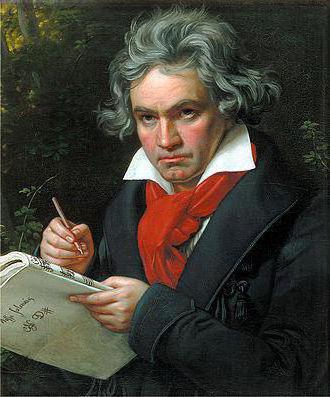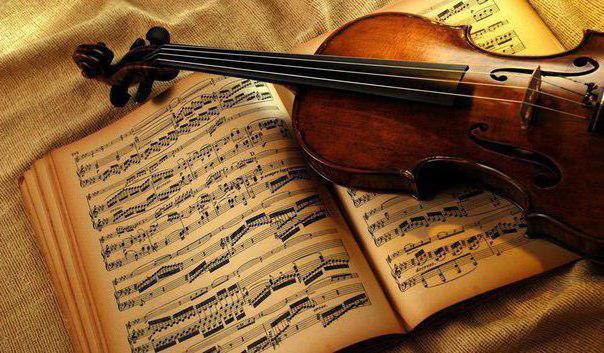Viennese classics entered the world history of music as the largest reformers of the musical genre. Their work is not only unique in itself, it is also valuable because it determined the further development of musical theater, genres, styles and directions. Their works laid the foundation for what is now considered to be classical music.
General characteristics of the era
These authors are united by what they did at the turn of the two largest cultural and historical eras: classicism and romanticism. Viennese classics lived in a transitional period, when there was an active search for new forms not only in music, but also in fiction, painting, and architecture. All this largely determined the direction of their activities and the problems of the compositions. XVIII - the first half of the XIX century was marked by serious political upheavals, wars that literally turned the map of Europe and had a strong impact on the minds of modern intelligentsia and educated circles of society. Viennese classics were no exception. For example, it is well known that the Napoleonic wars greatly influenced the work of Beethoven, who in his famous 9th symphony (“Choral”) carried out the idea of universal unity and peace. It was a kind of response to all those disasters that shook the European continent at the time we are considering.
Cultural life
Viennese classics lived in a period when baroque receded into the background, and a new direction began to play a leading role. It strove for harmony of forms, unity of composition and therefore abandoned the magnificent forms of the previous era. Classicism began to determine the cultural image of many European states. But at the same time, there was already a tendency to overcome the harsh forms of this movement and create powerful works with elements of drama and even tragedy. These were the first signs of the advent of romanticism, which determined the cultural development of the entire 19th century.
Opera Reform
Viennese classics played a decisive role in the development of all musical genres of the period in question. Each of them, so to speak, specialized in any one style or musical form, but all their achievements were included in the golden fund of world music. Gluck (composer) was the largest and one of the most famous authors of his time. It is difficult to overestimate his role in the development of the theater: after all, it was he who gave the genre of opera that finished appearance in which we now know it. The merit of Christopher Gluck is that he was the first to depart from the understanding of opera as a work to demonstrate vocal abilities, but he subordinated the musical beginning of the dramaturgy.
Value
Gluck is the composer who made the opera a real performance. In his works, as well as in the works of his followers, vocals became largely dependent on the word. The plot and composition, and most importantly the drama, began to determine the development of the musical line. Thus, the opera ceased to be an exclusively entertaining genre, but turned into a serious kind of musical creation with complex dramaturgy, interesting characters from a psychological point of view, and a fascinating composition.
Composer's works
The Vienna Classical School formed the basis of the entire world musical theater. A considerable merit in this belongs to Gluck. His opera Orpheus and Eurydice was a breakthrough in this genre. In it, the author focused not on the virtuosity of the performance, but on the drama of the heroes, thanks to which the work received such a sound and is still being performed. Another opera, Alcesta, was also a new word in world music. The Austrian composer again emphasized the development of the storyline, due to which the work received a powerful psychological coloring. The composition is still performed on the best stages of the world, which suggests that the reform of the opera genre carried out by Gluck was of fundamental importance for the evolution of the musical theater as a whole and determined the further development of the opera in this direction.
Next stage of development
The Austrian composer Haydn also belongs to the famous galaxy of authors who have made a significant contribution to the reform of musical genres. He is known primarily as the creator of symphonies and quartets. Thanks to them, the maestro gained widespread popularity not only in the Central European countries, but also beyond them. The most widely known are his works, which were included in the world repertoire under the name “Twelve London Symphonies”. They are distinguished by a sense of optimism and cheerfulness, which, however, is characteristic of almost all the works of this composer.
Features of creativity
A characteristic feature of the works of Joseph Haydn was their connection with folklore. In the works of the composer you can often hear song-dance motifs that made his work so recognizable. This reflected the attitude of the author, who largely imitated Mozart, considering him the best composer in the world. He borrowed joyful light melodies from him, which made his works unusually expressive and bright in sound.
Other works of the author
Haydn’s operas are not as popular as his quartets and symphonies. Nevertheless, this musical genre occupies a prominent place in the work of the Austrian composer, so a number of his works of this kind should be mentioned, especially since they are a significant stage in his creative biography. One of his operas is called "Pharmacist" and was written for the opening of a new theater. Haydn also created several more works of this kind for the new buildings of the theater. He wrote mainly in the style of the Italian opera buffa and sometimes combined comic and dramatic elements.
The most famous works
Haydn's Quartets are rightly called the pearl of world classical music. They combined the basic principles of the composer: elegance of form, virtuosity of performance, optimistic sound, thematic diversity and original way of performance. One of the famous cycles is called “Russian” because it is dedicated to the Tsarevich Pavel Petrovich, the future Russian Emperor Paul I. Another group of quartets is intended for the Prussian king. These compositions were written in a new manner, as they were distinguished by their unusual flexibility in sound and a wealth of contrasting musical shades. It is with this type of musical genre that the name of the composer gained world significance. It should be noted here that the author often resorted to the so-called “surprises” in his compositions, making unexpected musical passages in those places where the audience least expected it. Among these unusual works is Haydn's Children's Symphony.
General characteristics of the work of Mozart
This is one of the most famous authors of music, which is still very popular among fans of classics and is loved all over the world. The success of his works is explained by the fact that they differ in logical harmony and completeness. In this regard, many researchers attribute his work to the era of classicism. However, others believe that the Viennese composer became a harbinger of romanticism: after all, in his works a tendency to portray strong, outstanding images, as well as a deep psychological study of the characters (in this case we are talking about opera), were already clearly visible. Be that as it may, but the works of the maestro are distinguished by depth and, at the same time, extraordinary ease of perception, drama and optimism. They are light and accessible to everyone, but at the same time very serious and philosophical in their content and sound. This is precisely the phenomenon of its success.
Composer operas
The Vienna Classical School played a decisive role in the development of the opera genre. A huge merit in this belongs to Mozart. Performances staged on his music are still very popular and loved not only by true music lovers, but also by the general public. Perhaps this is the only composer whose music is somehow known to everyone, even if they have the most distant idea of his work.
Perhaps the most famous opera is “The Wedding of Figaro”. This is probably the most cheerful and at the same time extraordinary funny composition of the author. Humor sounds in almost every game, which ensured him such popularity. The famous aria of the protagonist the very next day became a real hit. Mozart's music - bright, playful, playful, but at the same time unusually wise in its simplicity - immediately won universal love and recognition.
Another famous opera by the author is Don Giovanni. In popularity, it, perhaps, is not inferior to the aforementioned: productions of this performance can be seen in our time. It is significant that the composer presented the rather complicated history of this person in a very simple and at the same time serious form, thereby once again demonstrating his deep understanding of life. In this work, musical genius managed to show both dramatic and optimistic components, which in all his works are inextricably linked with each other.
Nowadays, the opera The Magic Flute is no less famous. Mozart's music reached its climax in its expressiveness. In this composition, she is light, airy, cheerful and at the same time unusually serious, so one can only wonder how the author managed to convey the whole philosophical system in such simple, harmonious sounds. Other operas of the composer are also known, for example, at present you can periodically hear “Charity of Titus”, both in theatrical and in concert performance. Thus, the opera genre occupied one of the main places in the work of the ingenious composer.
Separate works
The composer worked in various directions and created a large number of musical works. Mozart, whose “Night Serenade”, for example, has long gone beyond concert performances and gained wide fame, wrote in a very simple and accessible language. Perhaps that is why he is often called the genius of harmony. Even in the tragic works the motive of hope sounded. In Requiem, he expressed his thoughts about a better future life, so that, despite the tragic tone of the music, the work leaves a feeling of enlightened peace.
Mozart's concert also features harmonious harmony and logical completeness. All parts are subject to a single theme and are united by a common motive that sets the tone for the entire work. Therefore, his music is heard in one breath. In this form of the genre, the main principles of the composer's work were embodied: a harmonious combination of sounds and parts, bright and at the same time virtuoso sound of the orchestra. No one else could so harmoniously build his musical work as Mozart. The composer's “night serenade” is a kind of standard for the harmonious combination of different sound parts. Peppy and loud passages are very rhythmically replaced by slightly audible virtuoso parts.
Separately, it should be said about the masses of the author. They occupy a prominent place in his work and, like other works, are imbued with a sense of bright hope and enlightened joy. It is also worth mentioning the famous Turkish Rondo, which went beyond concert performances, so it can often be heard even in advertisements on television. But Mozart’s concert, in which the principle of logical completeness reached the highest degree, perhaps possesses the greatest sense of harmony.
Briefly about Beethoven
This composer belongs entirely to the era of the rule of romanticism. If Johann Amadeus Mozart is on the verge of classicism and a new direction, then Ludwig Van Beethoven completely switched to portraying strong passions, powerful feelings and extraordinary personalities in his works. He became perhaps the most prominent representative of romanticism. It is significant that, turning to dramatic, tragic themes, he wrote only one opera. The main genre for him remained symphonies and sonatas. He owes merit in reforming these works, just as Gluck had transformed an opera performance in his time.
A striking feature of the composer's work was that the main theme of his works was the depiction of a powerful, titanic will of the individual, which overcomes difficulties and all obstacles with a huge effort of will. Also, L.V. Beethoven devoted much space in his writings to the theme of struggle and opposition, as well as to the motive of universal unity.
Some biography facts
He came from a family of musicians. His father wanted the boy to become a famous composer, so he worked with him, resorting to rather harsh methods. Perhaps that is why the child grew gloomy and severe by nature, which subsequently affected his work. Beethoven worked and lived in Vienna, where he studied with Haydn, but these classes very quickly disappointed both the student and the teacher. The latter drew attention to the fact that the young author was dominated by rather gloomy motives, which at that time was not accepted.

Beethoven’s biography also briefly describes the period of his fascination with the liberation struggle. At first he accepted the Napoleonic Wars with enthusiasm, but later, when Bonaparte proclaimed himself emperor, he abandoned the idea of writing a symphony in his honor. In 1796, Ludwig began to lose his hearing. However, this did not interrupt his creative activity. Already being completely deaf, he wrote his famous 9th symphony, which became a real masterpiece in the world musical repertoire. Beethoven’s biography (it’s impossible to tell about it briefly) also contains information about the maestro’s friendship with prominent people of his time. Despite the closed and sharp character, the composer was friends with Weber, Goethe and other figures of the era of classicism.
The most famous works
It has already been said above that the characteristic feature of L. Beethoven's creativity was the desire to portray strong, emotional characters, the struggle of passions, and overcoming difficulties. Among the works of this genre, “Appassionata” is especially distinguished, which, according to the intensity of feelings and emotions, is perhaps one of the most powerful. When the composer was asked about the idea of its creation, he referred to Shakespeare's play “The Storm”, which, according to him, served as a source of inspiration. The author drew a parallel between the motives of the titanic impulses in the playwright's composition and his musical interpretation of this topic.

One of the author’s most popular works is “Moonlight Sonata”, which, on the contrary, is imbued with a sense of harmony and peace, as if in contrast to the dramatic melody of his symphonies. It is significant that the very name of this work was given by the contemporaries of the composer, possibly because the music resembled sea overflows on a quiet night. It is these associations that most listeners have when listening to this sonata. The famous composition “To Elise”, which the composer dedicated to the wife of the Russian Emperor Alexander I Elizabeth Alekseevna (Louise), is no less, or perhaps even more popular. This composition strikes with an amazing combination of light motives and serious dramatic passages in the middle. A special place in the work of the maestro is occupied by his only opera "Fidelio" (translated as "Faithful" from Italian). This work, like many others, is imbued with the pathos of freedom and the call for freedom. Fidelio still does not leave the stages of the leading opera houses of the world, although the opera received recognition, as almost always happens, not immediately.
Ninth Symphony
This composition is perhaps the most famous among the rest of the composer's works. It was written three years before his death, in 1824. The Ninth Symphony completes the long and many years of the composer's search for a perfect symphonic work. It differs from all previous ones in that, firstly, the choral part was introduced in it (to the famous Ode to Joy by F. Schiller), and secondly, in it the composer reformed the structure of the symphonic genre. The main theme is gradually revealed through each part of the work. The beginning of the symphony is rather gloomy, difficult, but even then a distant motive of reconciliation and enlightenment sounds, which grows as the musical composition develops. Finally, in the finale itself, a rather powerful choral vocal sounds, urging all people of the world to unite. Thus, the composer further emphasized the main idea of his work. , , , . : . , . . , .

Gluck, Haydn, Mozart, Beethoven became the founders of classical music, having a huge impact on the entire subsequent musical history of not only Europe, but also the world. The importance of these composers and their contribution to the reform of musical theater is difficult to overestimate. Working in a wide variety of genres, they created the backbone and form of the works, on the basis of which their followers composed new works. Many of their creations have long gone beyond concert performances and have received widespread sound in films, on television. "Turkish Rondo", "Moonlight Sonata" and many other works by these authors are known not only to music lovers, but even to those who are not familiar with classical music. Many researchers rightly call the Vienna stage of the development of classics the decisive one in the history of music, since it was during this period that the main principles for creating and writing operas, symphonies, sonatas and quartets were laid.